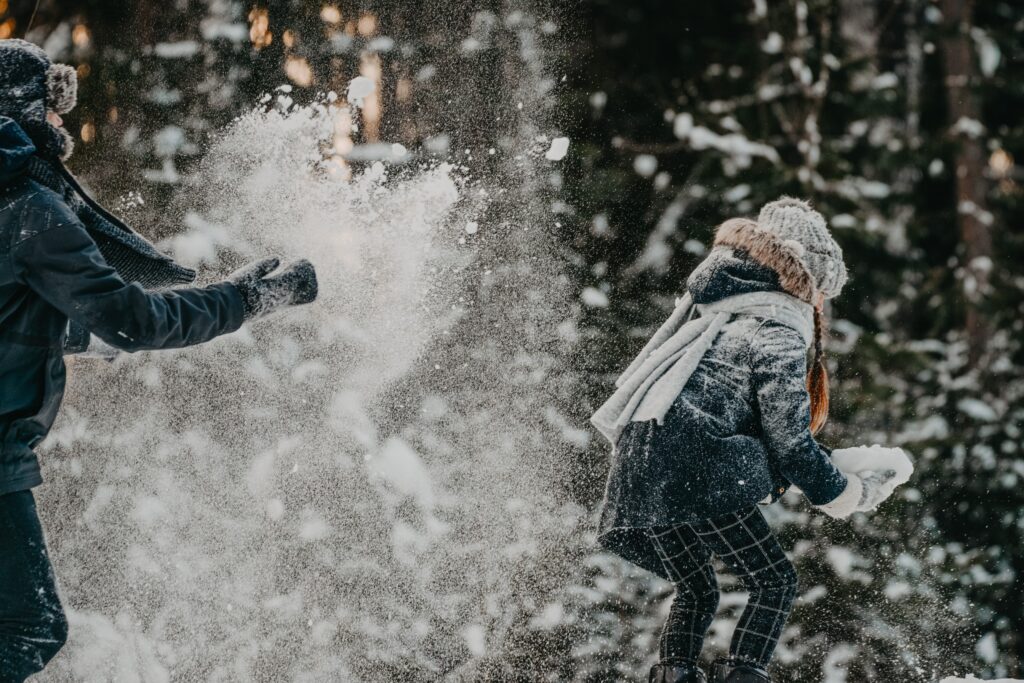Experience the Joy of Winter with These Snow Day Activities

by Stefanie Michaels
I am a true California girl, born and raised in Los Angeles, and I am used to mild winters and sunshine at least 350 days a year. Many cold days, during Los Angeles winters are spent outside, under heat lamps, should it hit the high 60’s. If the weather dips into the 50s, you’ll see people walking around town in thick parkas.
Angelenos aren’t made for cold climates; even the idea of being cold makes us shudder.
I’m a world traveler and have always traveled to freezing places. I love skiing, too. So it’s not that I’m not prepared for cold weather when I need be.
But that’s just it. Most people who have experience with cold weather prepare for it by gearing up, adding thicker clothing, and when the temperature hits extreme lows, they stay at home. Most Angelenos have light-weight sweaters in their drawers, and some don’t even own a thick coat– opting instead for hoodies worn on “cold” days.

I visited friends in Minnesota during winter and found out about snow days! We had the best time doing at-home projects, and I had an awakening of creativity and all of the things one could do when stuck on the inside.
Here’s my list of ideas:
- Social-ish: Finding activities to keep busy can include game nights, mini-parties with neighbors nearby, and inside spa days with friends and family. Getting together and spending quality time with loved ones is the best part.
- Entertainment: I love watching movies or vintage TV shows, listening to music and reading to escape reality, especially when watching warm weather programming while it’s snowing outside.
- Creativity: Crafting, DIY projects, cooking and baking can fun because tapping into creativity and making something to special for others feels good and tastes good.
- Problem-solving: Puzzling, games, and video gaming require problem-solving and can be challenging and time consuming.
- Relaxation: Engage in self care like yoga using an at-home app, taking bubble bomb baths, or reading in a window bay, can be relaxing and help to reduce stresses of daily life.

- Accomplishment: Some of us– eh-hem, myself included, would rather put off these time consuming tasks, when we know we can do something much more fun in our spare time. But decluttering can be therapeutic. Activities like cleaning and organizing can be fun because who doesn’t want to feel like Marie Kondo– productive and accomplished.
- Self-care: Creating skincare and body care products with natural products (recipes from online) or getting your hands in the soil by indoor gardening can be fun because they involve taking care of oneself, be it body or mind or the environment. I always say getting your hands in dirt is good for the soul.
- Kid-ish: Love it when feeling like a kid again? Order faux snowballs online to prepare for a snow day, or use dampened cotton balls and have an indoor snowball fight. Or, weather permitting, spend a little time outside having similar fun.
Did you know?
Based on climate data and population statistics, it is likely that a significant portion of the world’s population has never seen snow, as many regions of the world, particularly those near the equator, do not experience snowfall.

In fact, it is estimated that nearly one-third of the world’s population, or over 2 billion people, live in areas that are classified as tropical, where this type of weather is extremely rare or never seen.
A little history:
Snow dates back to ancient civilizations, where it was seen as a natural phenomenon and often associated with various mythological beliefs and customs. For example, the ancient Greeks believed flakes resulted from the winter season and associated it with the mythological god Zeus.
In contrast, some Native American tribes thought it was a spirit gift.
Throughout history, snow has also played a role in transportation, commerce, and recreation. In the 19th and 20th centuries, snow was essential in developing winter sports, such as skiing and snowboarding.
It’s now become a topic of scientific study, with researchers exploring the causes of snow formation and its impact on the environment.
Technological advances have made it possible to artificially produce snow for skiing and other winter sports, helping to ensure that these activities can continue even in regions with limited natural snowfall.


